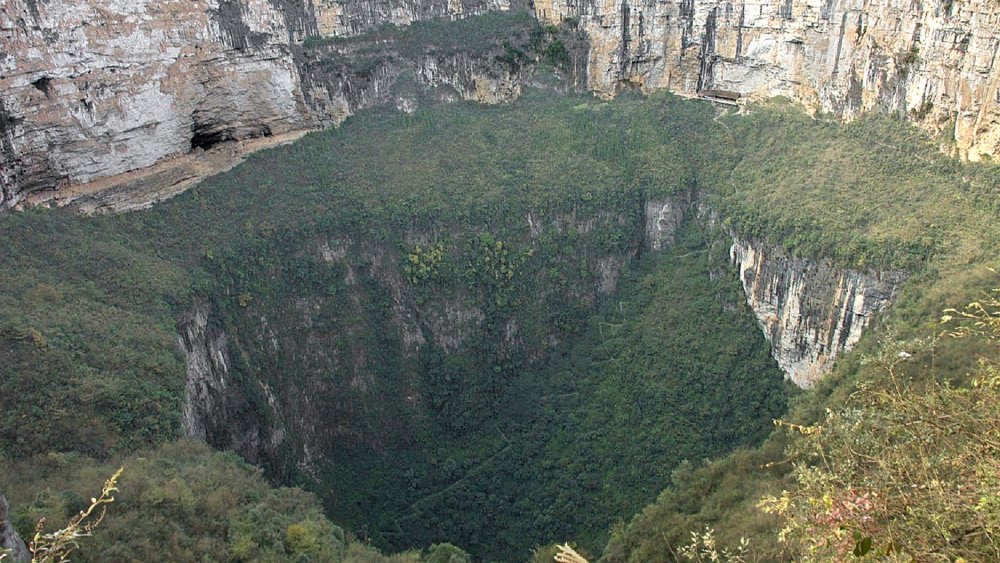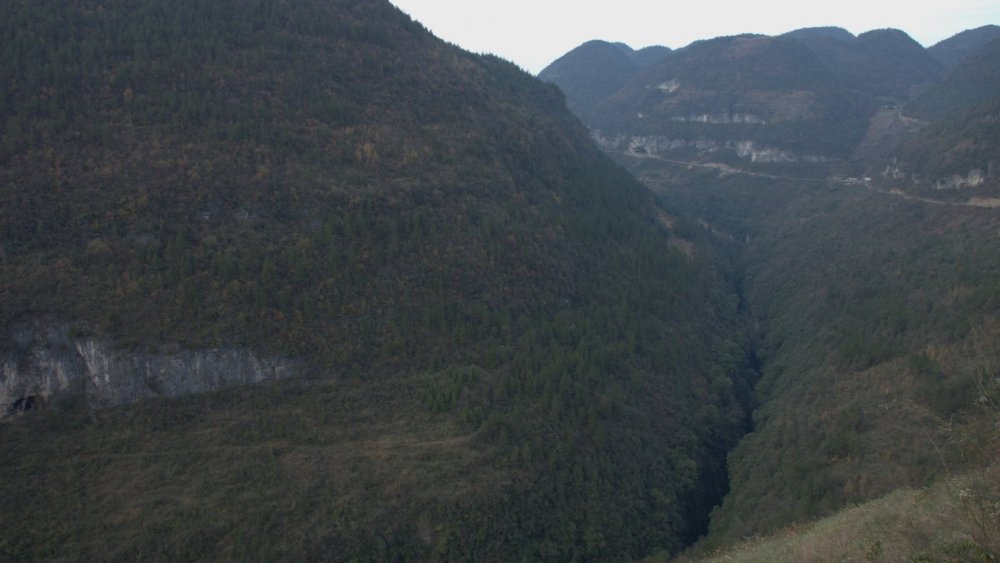The Surprising Truth About The World's Deepest Sinkhole
If you hear the word "sinkhole," the first thing you might think of is a subreddit about jazz reinventions of classic Star Wars leitmotifs, Facebook debates about politics, or perhaps the most obvious timesink of all: cats failing to make jumps to the tops of refrigerators.
In reality, a "sinkhole" is, according to the United States Geological Survey, an environmental feature that traps water and does not allow it to drain. At least, the water soaks into the substrate on the underside of the sinkhole before draining to a river, stream, or the ocean. Sinkholes tend to form in areas where rock dissolves when it comes into contact with water, called "karst terrain," such as salt beds and limestone. Water can either burrow itself into pockets that resemble caverns, or just make a big hole like a well. Sinkholes tend to get attention when their surface collapses and creates an irregular ring on land that just creepily drops off into nothing. When they collapse, it happens with minimal warning, and if they collapse in an urban center, they can swallow entire roads and buildings.
Some sinkholes, such as those in Guatemala City, caved in after a week of strange sounds and left the landscape pockmarked with holes, per Momtastic. Others, such as those in Bimmah, Oman, are older and have been converted, in this case, into a swim park. One sinkhole, however, is so huge and stunning that it looks like a portal into another world, hewn into a mountainside.
A 2-million-year-old portal into another world
China's Xiaozhai tiankeng is the largest sinkhole on Earth — tiankeng translates as "sky holes" or "heavenly pits," as stated in The Earth Story. The sinkhole, located in the gorgeous, lush forests of Guangxi, is a staggering 662 meters deep and 527 meters wide at the surface. To put that into perspective, it's over 100 meters taller than the One World Trade Center in New York City, as shown on Skyscraper Center, and just about as wide as the building is tall. Visually, the sinkhole looks like a titan took a massive cleaver and started hacking away at the mountainside until it chopped its way down and made abrupt cliff edges circling the sinkhole's rim.
Like most sinkholes, the structure is the end result of at least 2 million years of geological change, as described in Science Alert. In 2018 a joint venture between UK and Chinese scientists allowed the entire interior of the sinkhole to be mapped, and its volume recorded at 6.7 million cubic meters. The pit descends into an enormous cave complex with corridors, pillars, craters, and an entire interior ecosystem that includes spherical limestone deposits called cave pearls. The water collected at the bottom feeds into an underground river which itself feeds into the Panyang River.
Xiaozhai tiankeng has gained attention as a tourist attraction, as well, on sites like Trip Advisor and Virtual Globetrotting. As a phenomenal natural wonder, it's easy to see why.

